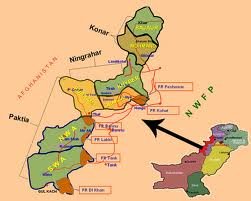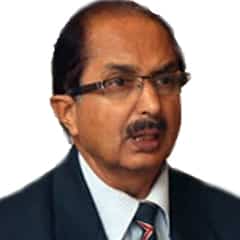by Asif Haroon Raja
Like all the isms (communism, socialism, extremism, terrorism), Talibanization is also a phenomenon that didn’t occur in a vacuum and without causation. Talibanization came with a big bang in Afghanistan in 1994 because of internecine war, infighting, war lordism, corruption and other social vices. It was accepted as a panacea to social vices, insecurity and lawlessness prevalent in Afghanistan. The foundations of Taliban were laid in Pakistan since the Afghan Talibs received religious education in mosques of Pakistan. This factor further cemented the ethnic, cultural and religious bonds of Pashtuns living both sides of Durand Line. Both were wedded to traditions of Pakhtunwali and Jirga system Pashtuns from both sides had fought Soviets in 1980s as well as Americans in 2001 and tens of thousands had died fighting alien forces. Affinity between them was therefore natural.
 Talibanization was readily accepted in FATA, some parts of Khyber Pakhtunkwa (KP) and Pashtun belt of Balochistan since Osama bin Laden and Mullah Omar were seen as heroes. The people from northwestern tribal belt suffering from acute poverty and illiteracy, despised British-made Frontier Crimes Regulations (FCR) and political agent system; and pro-rich system of justice practiced in Pakistan. Having seen that Sharia in Afghanistan had helped in controlling most vices including drug culture and speedy justice, they started vying for similar Islamic laws in FATA.
Talibanization was readily accepted in FATA, some parts of Khyber Pakhtunkwa (KP) and Pashtun belt of Balochistan since Osama bin Laden and Mullah Omar were seen as heroes. The people from northwestern tribal belt suffering from acute poverty and illiteracy, despised British-made Frontier Crimes Regulations (FCR) and political agent system; and pro-rich system of justice practiced in Pakistan. Having seen that Sharia in Afghanistan had helped in controlling most vices including drug culture and speedy justice, they started vying for similar Islamic laws in FATA.
Other reason was anti-Americanism, which was duly cashed in by Mutahida Majlis Ammal (MMA), a conglomeration of six religious parties formed in 2001. Anti-American factor together with absence of leadership of two mainstream parties helped MMA in achieving impressive results in 2002 general elections held under the auspices of Gen Musharraf military regime. The MMA besides winning good number of seats in the centre managed to form coalition governments in KP and Balochistan. During its five year rule in the two provinces, the MMA looked the other way to surreptitious activities of militants and indirectly helped them in consolidating power in Malakand Division including Swat and all the seven agencies of FATA and neighboring settled areas of KP. Weak central government remained more concerned with witch hunting of PML-N and PPP politicians to block return of exiled leaders. Moreover, MMA played a key role in allowing second term in office to Gen Musharraf through an act of parliament in 2004.
While Musharraf’s seven-point agenda was impressive and had the germs of success, his King’s Party failed to implement it. System of accountability was made selective and politically motivated, and judiciary made subservient. Slogan of real democracy was false. Easy inflow of aid from USA, World Bank, ADP and IMF and removal of sanctions as well as cooperative attitude of USA and the west helped Pakistan in improving its economy which had remained in doldrums till 2002. GDP jumped to 7% which helped Pakistan in improving its macro economy considerably but the much desired trickle down to benefit the masses never occurred. As a consequence the privileged class became more affluent while the poor became poorer.
War on terror fought by Pakistan Army at the behest of USA became the biggest source of economic drain as well as a cause of social imbalance. Musharraf employed regular troops in South Waziristan (SW) for the first time without carrying out in-depth analyses and ground preparations. On and off policy fluctuating between launching military operations and signing peace deals allowed the militants to shift, regroup, regain strength and strike back with greater vengeance. By the time the Army moved into North Waziristan in 2005 after inking peace accords with Ahmadzai Wazirs and Mehsuds in SW, the militants in North Waziristan (NW) duly reinforced by Al-Qaeda elements had become more organized and trained. CIA and RAW thwarted all attempts of reconciliation and kept inflaming terrorism. Army’s Employment against own people lowered its image in the eyes of the people of tribal belt.
Wrongful sacking of chief justice Iftikhar in March 2007 followed by vandalism of MQM ruffians in Karachi on 12 May resulting in death of about fifty persons and bloody Lal Masjid operation in July slumped the popularity of Musharraf and also lowered the standing of the Army. In retaliation to the deaths of men, women and children at the hands of security forces in Lal Masjid and Jamia Hafza, spate of suicide bombings was triggered in urban centres. Raised emotions of the youth of lower class enabled Baitullah Mehsud to speed up recruitment and form Tehrik-e-Taliban-Pakistan (TTP) in December 2007. Jihadi groups banned in 2001/02 started linking up with TTP and terrorism engulfed Pakistan. By 2008, the Army started losing space to the militants and a sort of cheerlessness crept in among lower ranks since many thought that the Taliban were on the right.
High lifestyle of the opulent class, their outlandish behaviour towards the have-nots but total compliance to Washington’s dictates, and rapid growth of liberalism under the garb of enlightened moderation became other causes of frustration, despondency, resentment and anger among the dispossessed. Subservience of judiciary, the police and other law enforcement agencies to the rulers and insensitivity towards the poor as well as arrogance of government officials towards them were other reasons which frustrated them. Their growing resentment and sense of hopelessness fuelled religious extremism.
The have-nots got further despondent when change over from one-man dictatorship to democracy in February 2008 didn’t bring any change in their lives. In fact, things began to worsen with every passing day under the rule of elected rulers. GDP tumbled to below 3% while inflation shot up to 15%. Sky rocketing price spiral, gas and electric load shedding, shortage of food items, record breaking corruption, high rate of unemployment, diminishing openings for the educated youth, bad governance and near absence of accountability of the wrong doers further distressed them. Efforts of NRO cleansed rulers to retain PCO judges and keep upright and clean judges out brought the people on the streets for the second time in a span of two years and frustrated their sinister designs.
As a consequence to pro-rich and anti-people policies pursued by the ruling regime, menace of terrorism kept expanding and by the time the military was launched in end April 2009 in Malakand Division and in Swat in a decisive round, the militants with the assistanc the Army may not have succeeded in achieving outstanding results in critical battles of e of foreign powers had gained substantial strength. They had enlarged their sway in FATA, most settled districts of KP, Swat and suburbs of Peshawar. Talibanization had made inroads in southern Punjab wherefrom sizeable number of militants had joined TTP.
At that critical stage when the overall situation looked gloomy certain positive developments had taken place. The judiciary under chief justice Iftikhar had become independent and assertive; the Army’s reins had come in the hands of Gen Kayani; the ISI had smelt the rat and had started taking counter measures against CIA And FBI’s unchecked activities, the media and civil society had become vibrant, foolproof arrangements for security and safety of our nuclear and missile assets had been made and there was complete harmony between all the services of armed forces. More so, troop surge in Afghanistan had failed to deliver and Gen McChrystal was pleading for more troops to counter growing strength of Taliban in southern and eastern parts of the country.
It will be recalled that soon after taking over as COAS in November 2007, Gen Kayani had announced that the Army will not have any role in the elections other than providing security. He withdrew all officers seconded to civil departments, started low intensity operations training in regiments, appointed right kind of senior officers in combat zones, took extraordinary welfare measures to boost the morale of lower ranks. These steps together with non-implementation of February 2009 peace accord by Maulana Sufi and Maulana Fazlullah and unanimous resolution of National Assembly to fight the anti-state militants with full force helped the Army in achieving outstanding results in the critical battles of Swat, Bajaur and SW.
These three operations not only broke the back of the militants and disarrayed the TTP; it took the steam out of the hostile propaganda of the west that the militants were on the verge of takeover of the state and the nukes. It forced the militants and their patrons to affect a change in their strategy to browbeat Pakistan by shifting the main weight of terrorism from the frontiers to urban centres where mosques, shrines and religious places were targeted. Suicide bombers are still being trained in FATA.
Recommencement of militancy in certain parts of FATA and spate of suicide attacks in Mardan, Hangu, Islamabad, Peshawar, Nowshera, Kohat, Faisalabad are a result of continued support of foreign powers to the militant organizations and failure of our government to remove the inequities of the tribal belt. Very little has been done to alleviate the suffering of the people. Moreover, law courts are not keeping pace with the progress made by the Army. So far from among hundreds of militants nabbed and handed over to the police for trials, none has been tried and sentenced.
Decision to open a cadet college in Wana is a good step but many other suchlike projects including modern educational and technical colleges and health facilities are required to be opened. Besides healing their wounds, Maliks culture should be revived and Nizam-e-Adl introduced to ensure cheap and quick justice. There is a need for an awareness drive through psychological operations to highlight perverse role of those among them misguiding teenagers to become suicide bombers. Until and unless ignorance and sense of deprivation are removed by providing greater job opportunities and the region developed on a crash program, extremism and fanaticism will keep growing.
About the writer: Asif Haroon is a defence analyst. Email:[email protected]

Brig Asif Haroon Raja an Member Board of Advisors Opinion Maker is Staff College and Armed Forces WarCoursequalified, holds MSc war studies degree; a second generation officer, he fought epic battle of Hilli in northwest East Bengal during 1971 war, in which Maj M. Akram received Nishan-e-Haider posthumously.
He served as Directing Staff Command & Staff College, Defence Attaché Egypt and Sudan and Dean of Corps of Military Attaches in Cairo. He commanded the heaviest brigade in Kashmir. He is lingual and speaks English, Pashto and Punjabi fluently.
He is author of books titled ‘Battle of Hilli’, ‘1948, 1965 & 1971 Kashmir Battles and Freedom Struggle’, ‘Muhammad bin Qasim to Gen Musharraf’, Roots of 1971 Tragedy’; has written number of motivational pamphlets. Draft of his next book ‘Tangled Knot of Kashmir’ is ready.
He is a defence analyst and columnist and writes articles on security, defence and political matters for numerous international/national publications.
ATTENTION READERS
We See The World From All Sides and Want YOU To Be Fully InformedIn fact, intentional disinformation is a disgraceful scourge in media today. So to assuage any possible errant incorrect information posted herein, we strongly encourage you to seek corroboration from other non-VT sources before forming an educated opinion.
About VT - Policies & Disclosures - Comment Policy



